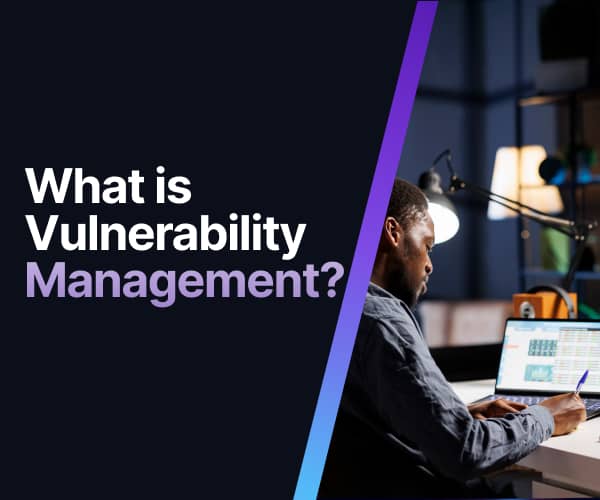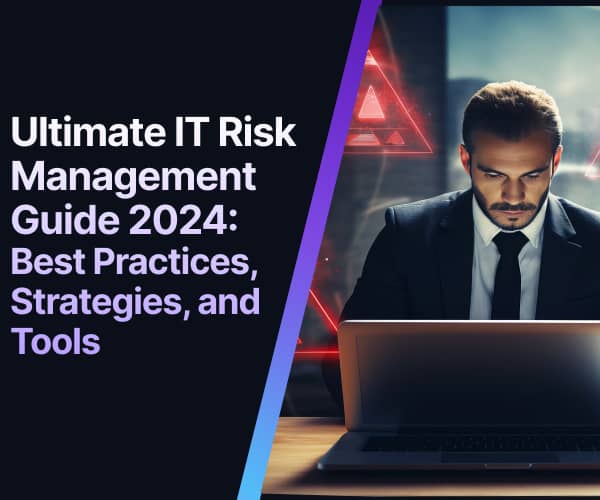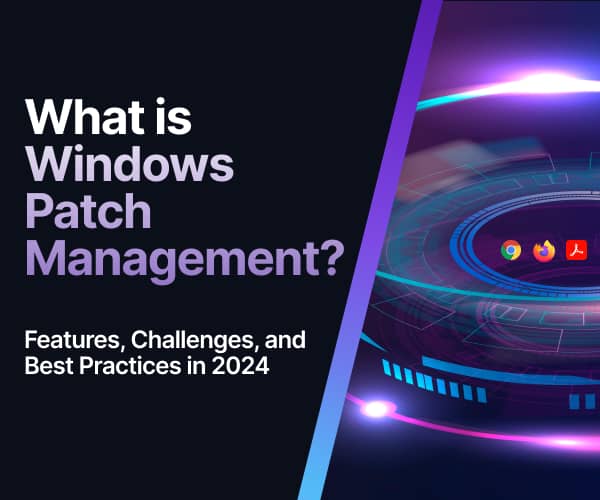The Cost of Ignoring Software Patching and How Easy2Patch Patch Manager Empowers Your Solutions
Have you ever wondered just how crucial patch management is? What's the solution if your system is left vulnerable and exposed to potential cyber threats simply because a patch slipped through the cracks? It's a scenario none of us want to face.
But what exactly is patch management? Patch management is an integral component of cybersecurity. It's the systematic approach to maintaining the security and functionality of computer systems by regularly applying patches to address software vulnerabilities. Third-party patch management, a subset of this practice, involves managing patches for software not developed in-house. Utilizing patch manager software can further enhance efficiency by providing centralized control and monitoring of the patching process.
Among the pillars of effective patch management stands automated patching. It swoops in, streamlining the entire patching process, from scanning for vulnerabilities to deploying fixes, all while easing the burden on your IT team. If you're looking to delve deeper into the world of automated patch management and understand its critical importance, check out Easy2Patch's blog post 'A Comprehensive Guide to Automated Patch Management.'
But what happens when patching falls by the wayside? The consequences can be severe. That's where Easy2Patch Patch Manager steps in. Easy2Patch’s vigorous features mitigate the risks of overlooking patches and empower your solutions. Are you ready to explore the true cost of ignoring software patching and how Easy2Patch can be your ultimate ally? Let's First dive into why exactly patches matter?

Why Patches Matter
Patches are your trusty sidekicks, keeping your digital world safe and secure. But why exactly do they matter, and what role do they play in keeping our digital lives safe and sound?
- Strengthening Security: Are You Vulnerable?
Think of patches as your digital protection, standing guard against cyber threats lurking in the shadows. By promptly applying security patches, you're essentially slamming the door shut on hackers itching to exploit known vulnerabilities. There is no exact time and date when vendors release patches, and it’s not easy to track all these updates manually. But leaving your systems unpatched can compromise your company. The only solution here is automated patching tools. Automated patching operates by autonomously scanning installed applications to identify any available updates.
- Squashing Bugs: Smooth Sailing Ahead
Have you ever encountered a glitch that made your software misbehave? That's where bug fixes come into play. Patches tackle these pesky bugs head-on, ensuring your software runs like a well-oiled machine. Regardless of the level of expertise, all individuals can value a smoother experience throughout their digital journey.
- Turbocharging Performance: What's Under the Hood?
But patches aren't just about fixing what's broken; they also bring exciting new features to the table. With each update adding a fresh coat of paint to your favorite programs, it acts as a software makeover.

The High Stakes of Ignoring Patch Management
Ignoring patch management can have dire consequences for businesses, encompassing various operational, financial, and reputational risks. Continue reading to gain a comprehensive understanding of the dangers lurking in the shadows of patch neglect. We'll also examine real-life examples of companies that faced significant losses due to neglecting patch management.
1.Security Vulnerabilities in Outdated Software
Unpatched software exposes systems to exploitation as known vulnerabilities persist. Cybercriminals frequently target these vulnerabilities to gain unauthorized access, execute malicious code, or steal sensitive data. For instance, the EternalBlue vulnerability in Microsoft Server Message Block (SMB) was exploited by the WannaCry ransomware, affecting over 300,000 companies worldwide and incurring around $4 billion in costs. Similarly, Equifax experienced a security breach affecting 143 million records due to an unpatched vulnerability in Apache Struts.
2.Non-Compliance Fines
Compliance is crucial for enterprises, ensuring adherence to all applicable laws and regulations. Inadequate patch management can lead to non-compliance issues, resulting in significant fines. For example, Citibank faced a costly mishap when an outdated back-end system led to the accidental sending of $900 million, most of which wasn't due to creditors until 2023.
3. Loss of Reputation
Security breaches not only jeopardize data and finances but also tarnish a company's reputation, leading to loss of business and substantial financial losses. Even after taking corrective measures, the stigma of a breach can haunt a company indefinitely. Nike suffered approximately $100 million in lost sales due to issues with tracking goods caused by outdated inventory management software.
It's crucial to prioritize patch management by automating patch deployment and establishing clear policies for vulnerability management to maintain a proactive security posture. Regular vulnerability assessments should be conducted to promptly identify and address weaknesses, with resources like the CISA Known Exploited Vulnerabilities Catalog aiding in efficiently prioritizing critical vulnerabilities. For deeper insights and guidance, the Easy2Patch blog post 'Patching Up Security: 2024's Best Practices for Effective Patch Management' offers valuable information.
Understanding the Cost of Inaction
Neglecting regular software maintenance and updates can have severe financial implications for businesses. Many users often delay installing software updates despite being one of the most critical security measures, thus leaving systems vulnerable to cyber threats.
Financial Implications of Neglect
In the United States alone, the cost of cybersecurity breaches between August 2019 and April 2020 averaged a staggering $8.64 million. Such breaches underscore the importance of proactive software patching in safeguarding against potential financial losses and reputational damage.
Fines for Non-Compliance with GDPR
For businesses subject to GDPR regulations, non-compliance can result in hefty fines. Maximum fines under GDPR can reach €20 million or 4% of annual worldwide turnover, whichever is higher. Even lesser infringements can incur fines of up to 2% of annual global turnover or €10 million. These fines highlight the significant financial risk associated with failing to maintain compliance through timely software patching.
Cost of Recovering from Security Breaches
The financial impacts of cyberattacks continued to escalate, with the average cost of a data breach reaching $9.48 million in 2023. This represents a substantial 15.3% increase over three years, underlining the growing threat landscape. Moreover, the average cost of ransomware recovery amounted to $1.85 million in 2021. These costs encompass various factors, including downtime, network expenses, ransom payments, personnel hours, and lost opportunities.
Longer and Costlier Patching Process
Furthermore, the longer a system remains unpatched, the more challenging and costly the patching process becomes. Delayed patches accumulate vulnerabilities, complicating remediation efforts and increasing the likelihood of successful cyberattacks.
The Misconception of Patch Management
Patch management is often misunderstood and underestimated. Here, we'll explain some common myths about patch management:
Patch Management is Time-Consuming
One prevalent misconception surrounding patch management is its perceived time-consuming nature. Admittedly, updating numerous systems and software installations can appear daunting. However, the advent of automated patch management tools has revolutionized this process, significantly enhancing efficiency. These tools conduct regular system checks and autonomously download and deploy patches across the entirety of your infrastructure. Studies have shown that a robust patch management solution can slash the time spent on patching by a staggering 90%, transforming what was once a laborious task into a streamlined routine activity.
Patch Management is an Unnecessary Expense
Another misconception is viewing patch management as an unnecessary expense. It serves as a proactive defense mechanism against known vulnerabilities, substantially mitigating the risk of security breaches, data theft, and system compromise. A prime example illustrating the critical importance of patch management is the infamous WannaCry ransomware attack of 2017. This malicious software exploited a vulnerability in Microsoft Windows for which a patch had been readily available. Networks where administrators had neglected to apply the patch became vulnerable targets, resulting in the infection of over 200,000 computers across 150 countries. Consequently, the repercussions of not implementing timely patches can far outweigh the costs associated with maintaining a regular patch management process.
How Hackers Exploit Unpatched Systems
The exploitation of unpatched systems by hackers underscores the critical importance of proactive software maintenance and patch management. When software vulnerabilities are left unaddressed, they become prime targets for cybercriminals seeking to exploit them for nefarious purposes. Here, we outline some common methods through which hackers exploit unpatched systems:
- Crafting Specific Attacks
The first step for hackers is to craft a specific attack that targets the identified vulnerability within the software. These attacks could involve creating malware specifically designed to exploit the vulnerability, enabling them to gain unauthorized access or pilfer sensitive data.
- Malware Creation
One common tactic employed by hackers is the creation of malware that capitalizes on unpatched vulnerabilities. This malicious software is engineered to exploit the identified weakness in the target software, granting attackers unauthorized access or the ability to exfiltrate valuable information. Malware creation could manifest in various forms, such as trojans, ransomware, or spyware, each tailored to exploit specific vulnerabilities for maximum impact.
- Exploitation through Data Files
Hackers often deploy the attacks through seemingly harmless data files, concealing malicious code within innocuous-looking documents or media. For instance, a weaponized PDF file may harbor malicious code that, when opened by an unsuspecting user, exploits the unpatched vulnerability in the associated software, executing its payload undetected. This method allows attackers to infiltrate systems through seemingly legitimate channels, bypassing traditional security measures.

What are the Benefits of Patching
Software patching offers a multitude of benefits, ranging from enhanced security and improved functionality to regulatory compliance and customer trust. Discovering the advantages of software patching, this section delves into the numerous benefits it offers:
- Enhanced Security: Patching software involves updating existing programs with the latest bug fixes, security patches, and performance improvements. This process significantly reduces the risk of data breaches by swiftly addressing any vulnerabilities. Regular patching ensures systems are up-to-date with the latest security measures, thus protecting them from potential threats.
- Improved Functionality and Performance: Addressing security concerns and enhancing software in terms of features, usability, and performance, patch management ensures the implementation of bug fixes, allowing the software to operate with stability and ensuring users enjoy a smooth experience.
- Compliance: Automated patch management tools streamline the process across various devices and platforms, aiding organizations in maintaining security standards and regulatory compliance, thus ensuring that systems are consistently updated and secure, meeting industry requirements.
- Proactive Vulnerability Mitigation: Ensuring organizations stay current with security patches is essential for proactively defending against cyber attackers who exploit known vulnerabilities. Crucial for vulnerability management, this approach effectively reduces the window of opportunity for potential threats to infiltrate systems.
- Addressing Specific Bugs or Flaws Patches target exposed flaws within programs or operating systems, thereby improving overall stability. Patching addresses specific bugs or flaws, ensuring that software operates efficiently and reliably.
- Fixing Security Vulnerabilities: Security updates included in patches rectify vulnerabilities present in software code, bolstering system security and safeguarding against potential threats. These updates are essential for maintaining the integrity of systems and protecting sensitive data.
- Feature Updates: Patching not only focuses on security but also introduces new capabilities or enhances existing ones within software, enables users to leverage additional functionalities, thus improving their overall experience and productivity.
- Reduced Downtime: Regular patching minimizes system downtime caused by software bugs or security breaches. By swiftly addressing issues, organizations can maintain operational continuity and prevent disruptions to their workflows.
- Cost Savings: Patching plays a crucial role in preventing security breaches and system failures, resulting in significant cost savings for organizations in the long run. By mitigating risks and maintaining system integrity, patching helps avoid costly incidents and associated recovery expenses.
- Customer Trust: Regularly updating and patching software demonstrates a commitment to protecting customer data, thereby maintaining and building trust. It assures customers that their information is secure and that the organization prioritizes their privacy and security needs.

Mastering Patch Management: Are You Ready for Action?
Introducing Easy2Patch, the ultimate tool to help you master patch management with ease and efficiency. This innovative solution comprehensively updates third-party products across your IT infrastructure from a centralized platform. Whether you utilize WSUS, ConfigMgr, or Intune, Easy2Patch seamlessly integrates to streamline your patching processes.
- Automated Patching
Easy2Patch automates the process, ensuring a wide range of applications receive timely updates without requiring constant oversight.
- Centralized Patching Control
Take control of your patch management strategy with centralized control. Easy2Patch empowers you to effortlessly manage the distribution of third-party application updates through SCCM, WSUS, or Intune.
- Patch Deployment
Stay ahead of the curve by deploying third-party patches as soon as they are released. Easy2Patch ensures your systems are equipped with the latest updates to fend off potential threats.
- Patch Reliability
Trust in the reliability of your patches. With hash check controls, Easy2Patch maintains file integrity, mitigating the risk of corrupted updates.
- Patch Compliance
Keep pace with patch management standards and regulations effortlessly. Easy2Patch helps your organization maintain compliance by facilitating the timely deployment of necessary updates.
- Distributed and Remote Patching
Easy2Patch simplifies the distribution and patching of software updates across various devices and systems from local networks to remote locations.
- Agentless Patching
Enjoy secure patch deployment without installing separate software agents on target devices. Easy2Patch offers a seamless, agentless solution for updating your systems.
- Customized Patching
Tailor your patching strategy to meet specific organizational needs. Easy2Patch enables you to customize and distribute software updates based on predetermined criteria, ensuring effective resource allocation.
With support for over 400 products, Easy2Patch offers a comprehensive solution for your patch management needs. Synchronize the catalog, select the applications you require, and publish them effortlessly through the intuitive interface. By subscribing to the Easy2Patch catalog, you'll receive regular updates on supported applications, keeping you informed and up-to-date in the ever-changing landscape of software updates.
What Our Users are Saying
“Easy2Patch has truly revolutionized our operational processes, lifting a significant burden off our shoulder.
The extensive app catalog has effectively addressed issues encountered in older versions of apps. The console’s user-friendly interface allows us to effortlessly monitor the status within the discovered general structure. When the need arises to create a new app package the console simplifies the process, eliminating the tedious work and time wasted on preparing a new app package. Collaborating with local engineers for support has been exceptional, providing swift solutions and support.
In essence, Easy2Patch is an exceptionally high- quality product, and we are immensely grateful for its contribution to our efficiency. Thank you for providing such a valuable solution.”
Semih K.
Chairman of the Board- Numeko Group
“With Easy2Patch, a large part in our operational processes are eliminated.
With the large- scale app catalog, the findings experienced in old version apps have been closed in this sense. Especially, the ease of use of the console allows us to see the app status in the general structure that it discovers, and when we want to make a new app package when necessary, we can convert it into a package via the console. This completely eliminated the work and waste of time such as preparing a new app package. Finally, working with local engineers in terms of support is marvelous in terms of fast support and solution.”
Metin K.
Senior Enterprise Architecture- Aktiftech Inc.
The Value of Investing in Easy2Patch Patch Manager
Easy2Patch Patch Manager stands out as a comprehensive solution designed to streamline and fortify the patch management process. Investing in Easy2Patch offers numerous benefits that enhance the overall operational resilience and security posture of organizations.
Reliability
Easy2Patch instills confidence through its commitment to reliability. By facilitating the updating and installation of third-party applications directly from their official sources, users can trust that patches are sourced securely and efficiently, mitigating the risk of potential vulnerabilities.
Capability
Easy2Patch empowers users with a robust array of features. From offering various deployment methods for updates to integrating user feedback mechanisms within the application, it ensures a comprehensive patch management experience that aligns seamlessly with organizational objectives.
Visibility
Centralized management is key to effective patch management, and Easy2Patch provides clear visibility and control over every aspect of the process through its intuitive interface. Users can oversee updates and manage applications with ease, fostering greater transparency and efficiency.
Security
In an era rife with cybersecurity threats, Easy2Patch emerges as a stalwart defender of digital assets. By proactively patching vulnerabilities in third-party applications, Easy2Patch acts as a formidable barrier against cyber threats, safeguarding organizations from potential breaches and data compromises.
Get started with our patch management software for free
Get 30 Day Premium TrialExpert Insights
Gain a deeper understanding of patch management by exploring expert insights! Their wisdom offers a richer understanding of the true cost of ignoring software patching:
Youssef Elmalty
Principal Security Advisor Amazon Web Services
"Skipping patch updates is an invitation for trouble. Ignoring updates exposes your system to vulnerabilities, making it a playground for hackers and increasing the risk of cyberattacks and data breaches. See more..."
Dr. Ram Kumar G, Ph.D, CISM, PMP
Cyber Security & Risk Leader | LinkedIn Top Voice in Information Security, Cyber Security & Security Awareness | Certified Corporate Director | Author | Mentor | Award Jury | Visiting Faculty
"Simply put, if you don’t patch, for hackers you are a prize catch! See more..."
Odinaka Udoezika
Cybersecurity Engineer || Experienced with Firewall, SIEM, EDR, NAC, DLP, PAM, IAM and SOAR solutions || Securing Network and Cloud Environments.
"Hackers are constantly searching for new vulnerabilities in software that they can exploit to gain unauthorized access to systems, information or data. See more..."
Frequently Asked Questions
IT Automation Key Benefits and Best Practices

What Is Vulnerability Management?

Ultimate IT Risk Management Guide 2024: Best Practices, Strategies, and Tools

Best Practices for IT Infrastructure Management in 2024

What is Windows Patch Management? Features, Challenges, and Best Practices in 2024

What are the Cybersecurity Risks Associated with Outdated Software and Operating Systems?






